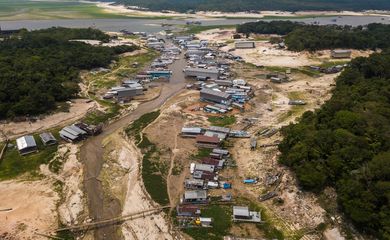Madeira River falls to 71 cm, below minimum level of 2023

The Madeira River, one of the main tributaries of the Amazon River, continues to dry up. Last week, its level had already fallen below the minimum recorded in 2023, which was 1.10 meters. On Tuesday morning (Sep. 10), the measurement at the Porto Velho station reached 71 centimeters, the lowest level recorded since 1967 by the Geological Service of Brazil (SGB).

SGB hydrologist Guilherme Cardoso highlights that the primary concern currently is the extended drought period, similar to what occurred in 2023, when substantial rainfall only arrived at the end of October.
"The Global Forecast System (GFS) models from the US National Weather Service do not predict significant rainfall over the next 15 days," Cardoso noted.
The projections for the next three months also indicate a lack of significant rainfall, which, according to Cardoso, could lead to a drought scenario similar to that of 2023.
"This delay [in rainfall] means we could face a much longer drought period than usual, as we are already experiencing very low levels in July—levels that typically don't occur until late September," he explains.
Despite measures such as the suspension of nighttime navigation since July 11 and the declaration of water scarcity by the National Water and Sanitation Agency (ANA) at the end of that month, the region's population continues to face challenges, including the isolation of some communities.
The National Department of Transport Infrastructure (DNIT) reports that the maintenance plan for the Madeira River waterway includes a regular dredging schedule to prevent complete interruptions in sections of the river.
Cardoso explains that while the Madeira River has already reached very low levels, the flow had not yet been critically affected as of this week.
"In this context, we still have a substantial useful flow. Last Thursday (5), we measured the flow at 2,800 cubic meters per second, which is quite significant," he said.


Dê sua opinião sobre a qualidade do conteúdo que você acessou.
Escolha sua manifestação em apenas um clique.
Você será direcionado(a) para o sistema Fala.BR, mas é com a EBC que estará dialogando. O Fala.BR é uma plataforma de comunicação da sociedade com a administração pública, por meio das Ouvidorias.
Sua opinião ajuda a EBC a melhorar os serviços e conteúdos ofertados ao cidadão. Por isso, não se esqueça de incluir na sua mensagem o link do conteúdo alvo de sua manifestação.
Clique aqui para mais informações sobre a Ouvidoria da EBC.









